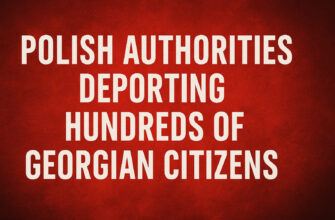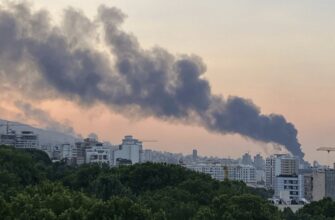This week, the border between India and Pakistan turned into a hotspot of tension once again, with fresh clashes breaking out in the disputed Kashmir region. As someone who has followed this conflict for years, I can feel the weight of the situation. Both countries possess nuclear weapons, and their ongoing rivalry isn’t just a regional issue—it could pull the entire world into chaos. In this piece, prepared by the team at TheMors, I’ll break down what’s happening, why it’s dangerous, and what it might mean for global peace. Let’s dive in.
What Sparked the Latest India-Pakistan Border Clash
The trouble started on April 22, when a group of gunmen attacked tourists in Pahalgam, a picturesque town in Indian-controlled Kashmir. The attack left 26 people dead, mostly Indian nationals. India immediately blamed Pakistan, claiming the attackers were backed by its government—a charge Pakistan firmly denied. Within days, the situation escalated. India took a drastic step by suspending the Indus Waters Treaty, a decades-old agreement that manages water sharing between the two nations. Pakistan called this move an “act of war” and responded by shutting its airspace to Indian flights.
Last night, I was scrolling through updates on X, and the news was grim: Pakistani forces fired on Indian positions along the Line of Control (LOC) for the second night in a row. India hit back, and both sides reported casualties. A friend of mine in Mumbai texted me this morning, saying people there are on edge. She mentioned that schools near the border have closed, and families are stocking up on supplies. The fear of escalation is real, and it’s not hard to see why.
A Long and Bitter Rivalry Between Nuclear Neighbors
India and Pakistan have been locked in a bitter feud since 1947, when they became independent from British rule and were split into two separate countries. At the heart of their conflict is Kashmir—a stunning region in the Himalayas that both nations claim as their own. They’ve fought two full-scale wars over it, in 1965 and 1971, and countless smaller battles along the border. Things took a terrifying turn when India tested its first nuclear weapon in 1974, followed by Pakistan in 1998. Today, they’re both nuclear powers, with arsenals that could cause unimaginable destruction.
I’ve been covering South Asian politics for a while now, and I still remember the 2019 crisis when India and Pakistan came dangerously close to war after a suicide bombing in Kashmir. Back then, both sides carried out airstrikes, and I was glued to the news, wondering if it would spiral out of control. Thankfully, international pressure helped calm things down. But this time, the stakes feel higher. The Indus Waters Treaty suspension is a big deal—it’s one of the few areas where India and Pakistan have managed to cooperate, even during tough times. Cutting it off could devastate Pakistan’s water supply, which fuels its farms and hydropower plants. Pakistan’s harsh response shows just how quickly this could get worse.
Why an India-Pakistan Conflict Is a Global Threat
The clashes along the India-Pakistan border aren’t just a problem for South Asia—they could have ripple effects across the globe. Here’s why everyone should be paying attention.
The Nuclear Danger
India and Pakistan both have nuclear weapons, and that’s what makes this conflict so terrifying. Experts estimate that India has around 170 nuclear warheads, while Pakistan has about 165, according to a 2025 report by the Stockholm International Peace Research Institute (SIPRI). If these two nations went to war and used even a fraction of their arsenals, the results would be catastrophic.
A few years ago, I interviewed a climate scientist who explained what a nuclear war between India and Pakistan would do. He showed me a study from Rutgers University that painted a grim picture: a nuclear exchange could kill 50 to 125 million people in days, more than the entire death toll of World War II. The explosions would create massive fires, sending thick black smoke into the atmosphere. That smoke would block sunlight, causing global temperatures to drop by as much as 10°C. Crops would fail, and famine could spread across the world. It’s hard to imagine the scale of suffering this would cause, but it’s a real possibility if tensions keep rising.
Risk of Global Powers Stepping In
This isn’t just about India and Pakistan—other major countries could get pulled into the conflict. Pakistan has a strong ally in China, which has invested heavily in the region through projects like the China-Pakistan Economic Corridor. Part of that corridor runs through disputed Kashmir, which India sees as a provocation. Meanwhile, India has been building closer ties with the United States, which views India as a key partner in its strategy to counter China in Asia.
I’ve covered U.S.-China relations for years, and I can tell you the tension between them is already high. If India and Pakistan go to war, China might back Pakistan with weapons or troops, while the U.S. could support India. That would turn a regional conflict into a global one, with unpredictable consequences. Just last week, a post on X by a geopolitical analyst warned that a South Asian war could be the “match that lights the fuse” for a broader U.S.-China confrontation. It’s a scenario no one wants to see play out.
Economic and Humanitarian Impacts
A war between India and Pakistan would disrupt the global economy in a big way. The region is close to major shipping routes that carry oil and gas from the Middle East to the rest of the world. If fighting breaks out, those routes could be blocked, sending oil prices soaring. I remember how markets reacted during the 2019 India-Pakistan standoff—oil prices jumped 5% in a single day, and shipping companies had to reroute their ships. This time, with the conflict already escalating, the economic fallout could be even worse.
On the humanitarian front, the situation looks grim. Millions of people live along the India-Pakistan border, and they’re often the first to suffer when violence erupts. I’ve spoken to aid workers who’ve been to Kashmir, and they’ve told me about families living in constant fear of cross-border shelling. A full-scale war would displace millions, creating a refugee crisis that would overwhelm the region. Countries like Afghanistan and Bangladesh, already dealing with their own challenges, would struggle to cope with the influx.
Can This Conflict Be Stopped?
The India-Pakistan border clashes are a warning sign, and the international community needs to act fast to prevent a disaster. Here are a few ways to de-escalate the situation.
International Mediation
World leaders need to step in and mediate before things get worse. The United Nations has already called for both sides to show restraint, but that’s not enough. I think the U.S. could play a key role here, especially with President Trump’s administration looking for ways to assert influence in global conflicts. Pakistan’s Defense Minister Khawaja Asif recently told BBC News that the world should be “gravely concerned” about the risk of nuclear war, and he hinted that Trump could help broker talks.
I’ve seen diplomacy make a difference before. During the 2019 crisis, pressure from the U.S. and other countries helped India and Pakistan pull back from the edge. We need that kind of intervention now—urgently.
Steps Toward Peace
Both nations need to take practical steps to calm things down. India could reconsider its decision to suspend the Indus Waters Treaty, which has been a rare success story in their relationship. Pakistan, for its part, could crack down harder on militant groups operating from its soil—something India has demanded for years.
I’ve talked to experts who say small gestures can go a long way. For example, both sides could agree to stop firing across the border for a few days as a sign of good faith. It’s not a solution, but it could create space for talks.
Raising Awareness
People around the world need to understand the stakes of this conflict. Too often, the India-Pakistan rivalry is dismissed as a faraway problem, but its consequences would touch everyone. By spreading awareness—through news, social media, and conversations—we can pressure leaders to prioritize peace.
When I covered the 2019 standoff, I noticed how little attention it got in Western media until things got really serious. This time, we need to be proactive and make sure the world is watching.
How This Affects You
You might be wondering how the India-Pakistan border clashes impact your life, especially if you’re far from South Asia. The reality is, the effects could hit closer to home than you think. A nuclear war would disrupt global food supplies, driving up prices for essentials like bread and rice. Economic fallout could affect your job, particularly if you work in industries tied to global trade, like shipping or manufacturing. And if the U.S. and China get involved, the risk of a larger conflict would threaten global security, affecting everyone.
If you’re in India or Pakistan, the situation is more immediate. Stay updated with local news, and if you’re near the border, follow government advice on safety. I’ve seen posts on X from people in border towns saying they’re preparing emergency kits—just in case.
Stay Updated with TheMors
The India-Pakistan border clashes are unfolding quickly, and the next few days could be critical. Will cooler heads prevail, or are we heading toward a global crisis? For the latest updates, head to TheMors – Breaking News. We’ve got more stories on international conflicts, nuclear risks, and global politics to help you stay informed. Don’t miss out—check it out now!









